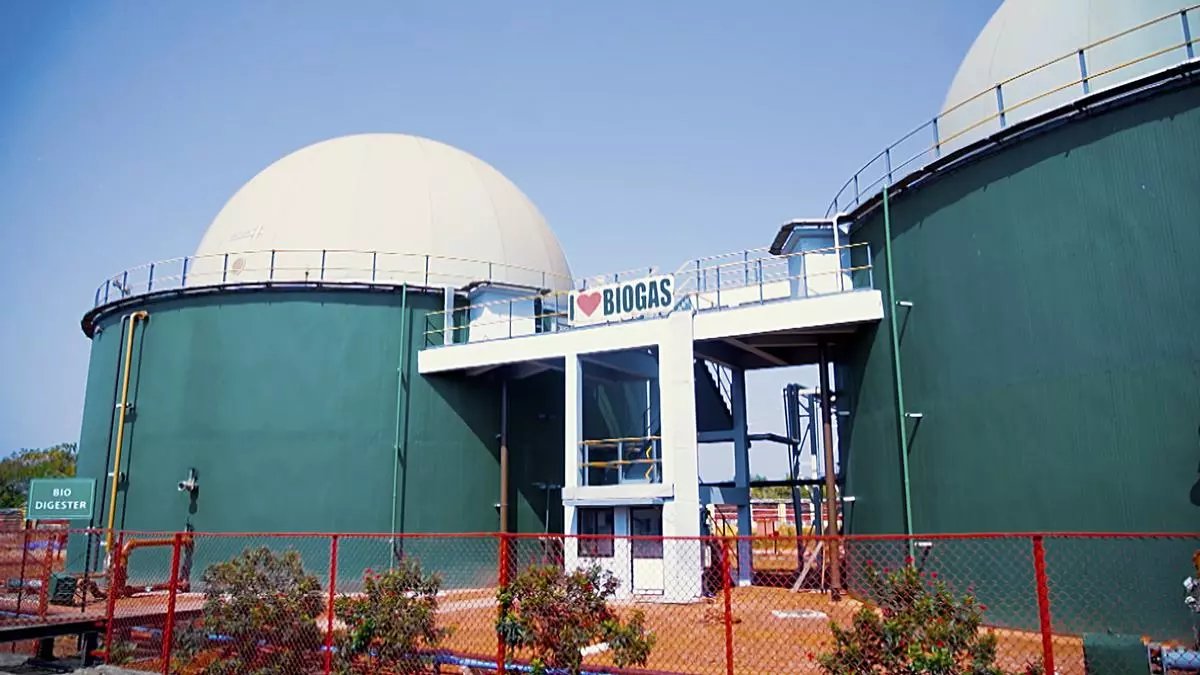India stands at a crucial energy crossroads. The nation’s growing energy demands must be met sustainably, and Compressed Biogas (CBG) offers a compelling solution. Derived from agricultural residues, organic waste, and other biomass, CBG presents a potent combination of energy security and environmental responsibility. However, despite its promise, the CBG sector remains hampered by a complex web of challenges, hindering its widespread adoption. This article explores these challenges and proposes a comprehensive policy roadmap to unlock CBG’s vast potential.
The bottleneck: Challenges stunting CBG growth
Several critical obstacles impede the scaling up of CBG development in India:
* Policy fragmentation: Oversight of biogas development is scattered across multiple ministries and agencies, resulting in a lack of cohesive strategy and implementation. This fragmented approach leads to regulatory inconsistencies, bureaucratic delays, and a general sense of uncertainty that discourages investment.
* Feedstock supply instability: CBG production relies on a consistent flow of agricultural residues and organic waste. However, the availability of these feedstocks is often seasonal and subject to price volatility, creating operational challenges and economic risks for CBG producers.
* Revenue uncertainty: The absence of guaranteed offtake agreements and transparent pricing mechanisms creates significant revenue uncertainty for investors. While agreements with Oil Marketing Companies (OMCs) exist, issues related to price fluctuations and contract enforcement persist, adding to the financial risks.
* Regulatory maze: CBG project developers face a complex and often opaque regulatory landscape, requiring numerous approvals and permits from various government bodies. This bureaucratic red tape slows down project timelines, increases costs, and can stifle innovation.
* Technological Gaps: Existing CBG production technologies require further development to enhance feedstock processing, improve carbon capture efficiency, and optimize overall process economics. Limited investment in research and development hinders innovation and the adoption of cutting-edge technologies.
* Environmental Concerns: CBG plants produce byproducts like slurry and wastewater. Without proper management, these byproducts can have negative environmental consequences. The lack of comprehensive and sustainable waste management practices undermines the environmental benefits of CBG.
* High Capital Costs: The substantial upfront investment required to establish CBG plants makes them less financially attractive compared to conventional fossil fuel-based energy sources. The absence of adequate financial incentives makes scaling up CBG production a significant financial undertaking.
* Weak Industry Representation: The CBG industry lacks a unified voice to effectively advocate for its interests and engage with policymakers. This fragmented representation weakens the sector’s ability to address systemic challenges and influence policy decisions.
A policy imperative: Unleashing CBG’s potential
A robust and coordinated policy framework is crucial to overcome these challenges and realise the full potential of CBG. Such a framework should not only address existing bottlenecks but also foster an enabling environment for investment, innovation, and sustainable growth. Here’s why policy intervention is essential:
* Bolstering energy security: CBG can significantly reduce India’s dependence on imported fossil fuels, strengthening energy independence and conserving valuable foreign exchange. A well-designed policy framework will accelerate CBG adoption, contributing to the nation’s “Atmanirbhar Bharat” (self-reliant India) vision.
* Promoting environmental sustainability: CBG production offers a pathway to reduce greenhouse gas emissions and promote sustainable waste management practices. Policy support will align the CBG sector with India’s commitments under the Paris Agreement and its net-zero targets.
* Stimulating rural economies: CBG production utilizes agricultural residues and organic waste, providing farmers with an additional income stream and creating new employment opportunities in rural areas. Policy incentives can revitalize rural economies and empower local communities.
* Addressing waste management challenges: CBG plants can play a vital role in addressing India’s growing waste management crisis by converting organic waste into valuable energy resources. A policy framework that promotes a zero-waste approach can significantly enhance environmental sustainability.
* Boosting investor confidence: Clear, consistent, and supportive policies will attract much-needed investment in the CBG sector. Guaranteed offtake agreements, transparent pricing mechanisms, and attractive financial incentives will de-risk investments and encourage greater private sector participation.
* Driving technological advancement: Policy-driven research and development funding, coupled with incentives for innovation, will catalyze the development of more efficient and cost-effective CBG production technologies. This will enhance the competitiveness of CBG and accelerate its adoption.
* Establishing global leadership: India, with its abundant biomass resources, has the potential to become a global leader in CBG production and bioenergy. A strong and forward-looking policy framework will position India as a pioneer in sustainable energy solutions and attract international collaboration.
A call to action: Charting the course for CBG development
The obstacles facing India’s CBG sector are significant, but they are not insurmountable. A comprehensive and well-crafted policy roadmap can effectively address these challenges and unlock the sector’s immense potential. Such a roadmap should include:
* Streamlined regulatory framework: Establish a single nodal agency to oversee all aspects of CBG development, simplifying the regulatory process and reducing bureaucratic hurdles.
* Stable feedstock supply mechanisms: Develop mechanisms to ensure a stable and predictable supply of feedstock, including exploring contract farming models and establishing feedstock aggregation centers.
* Incentivise CBG adoption: Provide financial incentives such as capital subsidies, tax breaks, and feed-in tariffs to make CBG competitive with conventional energy sources.
* Promote R&D and innovation: Invest in research and development to improve CBG production technologies, focusing on efficiency, cost reduction, and byproduct management.
* Develop sustainable waste management practices: Establish clear guidelines and incentives for the sustainable management of byproducts from CBG plants, ensuring environmental protection.
* Strengthen industry collaboration: Facilitate the formation of a unified industry association to represent the interests of CBG producers and promote collaboration among stakeholders.
By implementing such a policy roadmap, India can not only enhance its energy security and environmental sustainability but also drive rural economic development and emerge as a global leader in bioenergy. The time for action is now. Empowering India’s green future through CBG is an investment in a cleaner, more sustainable, and prosperous tomorrow.
(The author is Managing Director of Samarth SSK Ltd and Co-Chairperson of the Sugar Bioenergy Forum (SBF) under the Indian Federation of Green Energy.)




